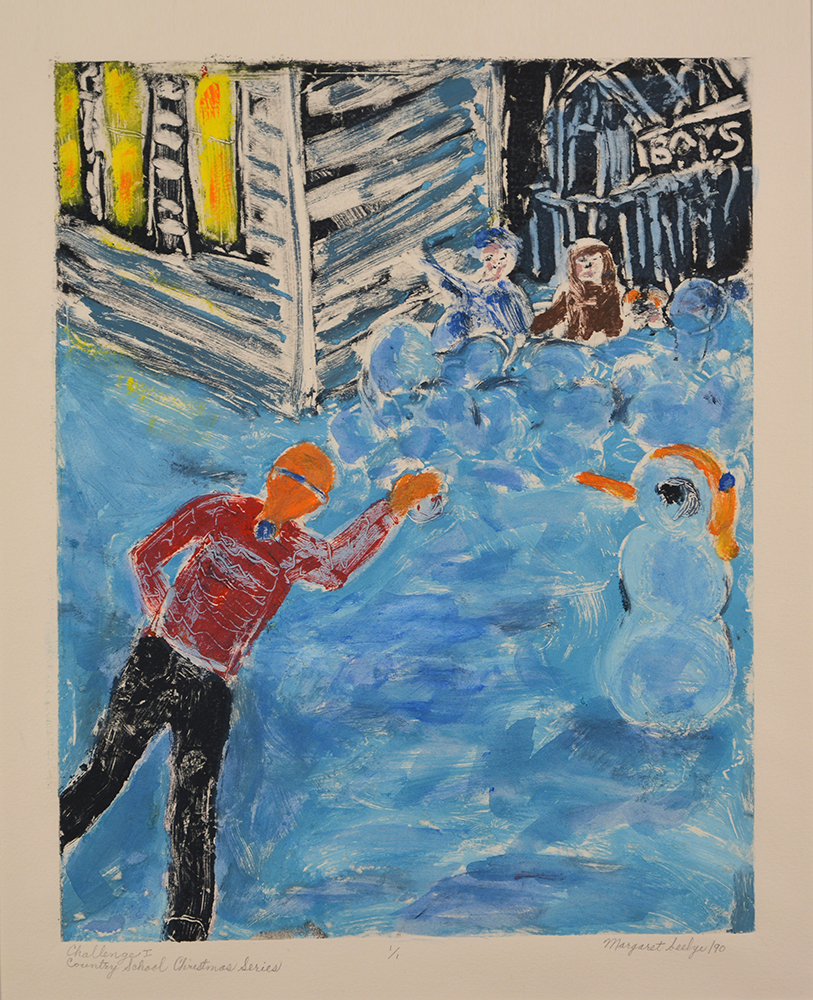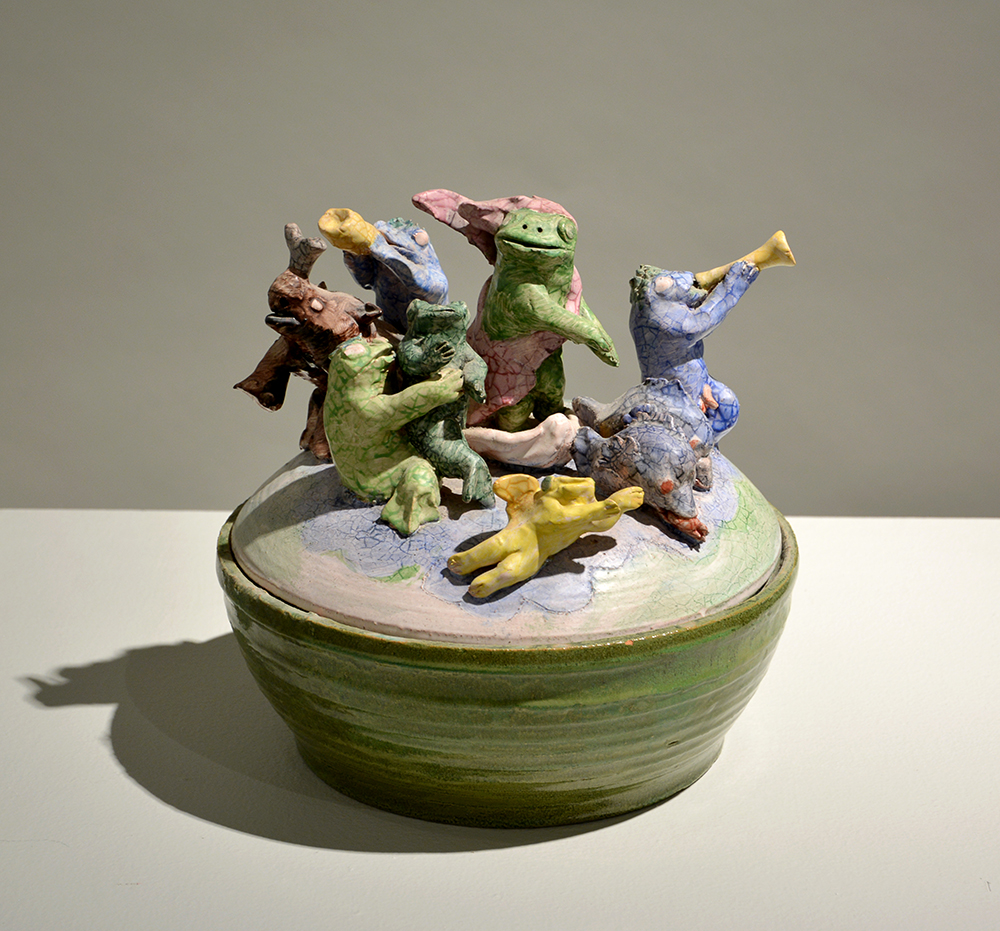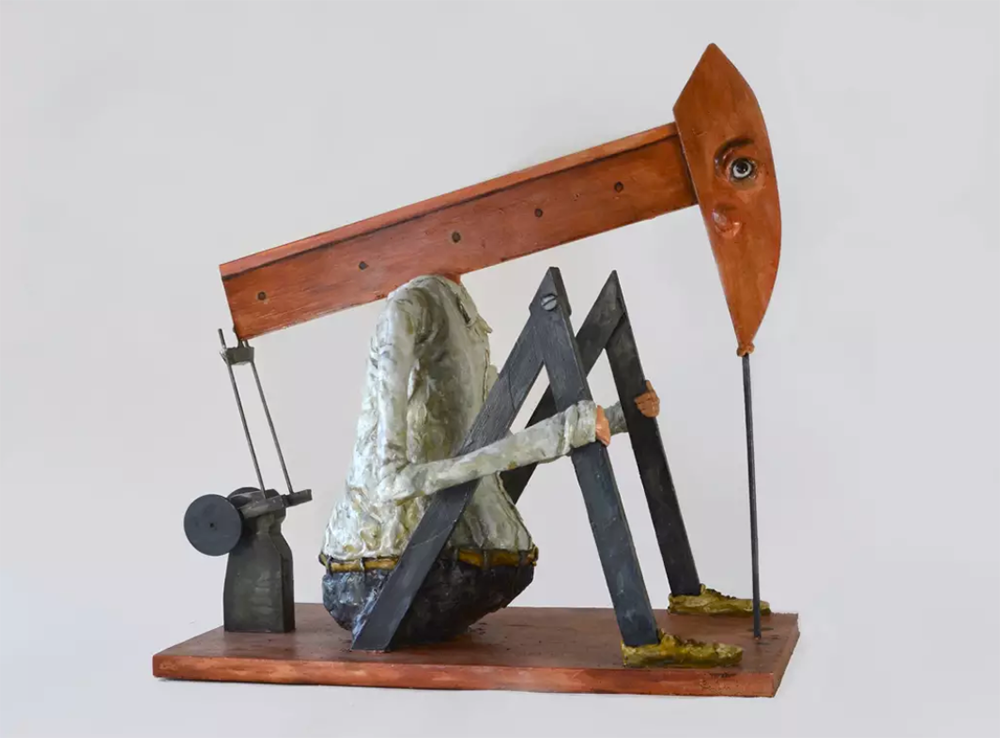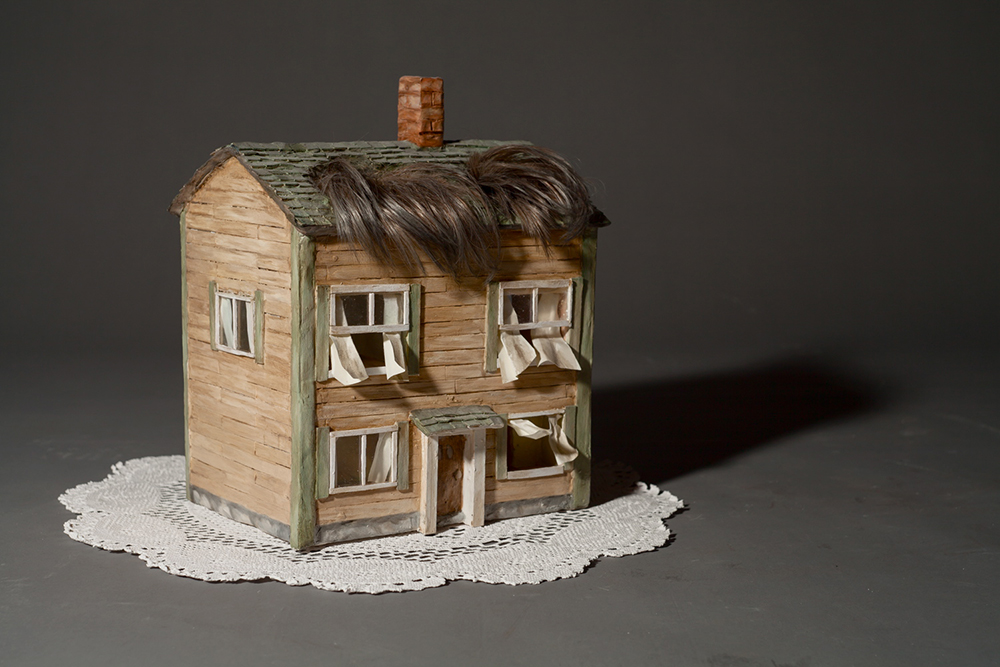Humour and Playfulness
Humour and playfulness are often key components in vernacular art. The artist might use their own art making as a form of play. They might explore and develop ideas playfully while making the work. They might also directly depict or evoke play in the work itself, as a subject or aspect.
Margaret Seelye was born on Haida Gwaii but moved with family to Red Deer, Alberta. From childhood she loved art, but was never formally trained. She became a teacher in rural schools and raised three young children as a widow. Her art was an opportunity to play and reminisce about the good times in a challenging life.
She would paint rural school stories in bright colour. Challenge I depicts a snowball fight that took place at a rural school in winter. Playing in the snow is a fact of life for prairie children, and this vivid image memorializes that experience.
Artists also reveal truth with humour. They playfully and critically distort familiar things in ways that cause the viewer to reflect on their current values. This method, satire, can demonstrate changes in values and institutions. Or it can make discussions of societal issues palatable by mocking negative aspects.
David Gilhooly used satire extensively and even created work that was satirical on multiple levels. A California artist, Gilhooly was a key player in the California Funk ceramics movement. As an instructor at the University of Saskatchewan Regina Campus, he was also significant in the subsequent Regina Funk movement.
His work, Galatea, as a Funk object, satirizes traditional ceramics in its distortion away from functional clay forms. It is also part of his larger Frog World series, which caricatures real-world people and scenarios as a world of frog characters. This work refers to Greek Mythology but with frog characters.
Another method is to use a humorous or playful lens to approach heavy subjects. Some artists will have a dark or challenging theme, but then use humour as a buffer or in-road for the viewer. A light-hearted approach eases people into deeper thoughts and conversations around challenging topics.
One artist that does this is Alberta artist, Jude Griebel. His works, Ground Drinker and Grandmother, approach their themes – exploitative resource extraction and the loss of rural life respectively – in a humourous way. The viewer first sees these anthropomorphized characters and is drawn in by their grotesque qualities. Only then do they consider their deeper meaning.
Ground Drinker behaves like a political cartoon, merging the equipment with a human. It emphasizes humanity as directly linked to the problem and needing to consider solutions. Similarly, Grandmother merges a decaying farmhouse with the sort of elderly person that might live there.
Hear Jude Griebel discuss the sources of the humour in his work:
Jude Griebel – Artist Interview. Enjoy this audio clip with an English transcript.
These artists and many more approach their work in playful ways, both in the making, and the outcomes. Whether by using humour and play to explore ideas and process, to relate deeper themes and narratives, or by expressing them directly in the work, they remain central concepts in vernacular art.
See Bibliography for sources.





